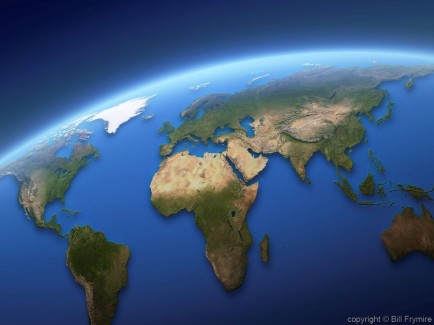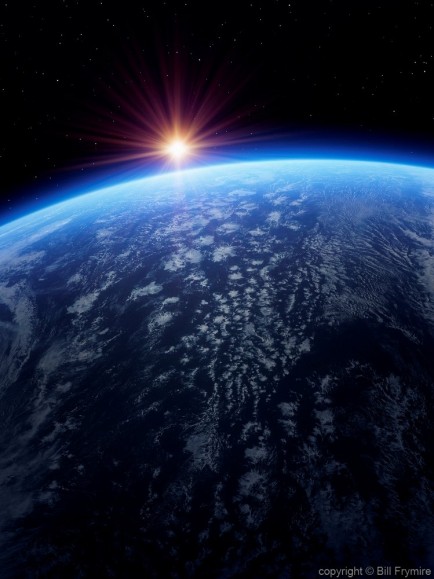Sea Level Rise

Want to use this image? Go ahead and click here for more info.
Water levels are rising and are projected to rise by 2.5 – 6.5 feet by 2100. Could our children be living on a globe where water levels swamp cities we currently live in?… Not sure what that might look like? Check out NASA’s Climate Time Machine or browse around check out the US National Oceanic and Atmospheric Administration Sea Levels Online, where they track the current changes in sea levels around the world.
This means that large parts of the US including Miami, San Francisco, and New Orleans could be underwater in your children’s lifetime. Studies also suggest that in Canada, Vancouver and Montreal are at risk, although Vancouver has recently adopted a climate change adaptation strategy. Even places with traditionally high water levels like Venice, Italy and countries like the Netherlands are facing a much higher risk of flooding.
These are just the first world examples, places where government can leverage the necessary resources to protect the existing land, or deal with the outcome of flooding should it happen. But what about non-western countries? There are many small populated island chains, like Kiribati and Tuvalu, that will simply disappear should the sea level continue to rise.
Former President of Tuvalu, Saufatu Sopoanga called the rising sea level due to climate change “a slow and insidious form of terrorism” back in 2003. They are faring little better these days, with their economy based mostly on a trust fund and fisheries. Most of the population exists on subsistence farming. Some critics are calling for Australia and New Zealand to accept the Tuvaluan population as refugees, but the people themselves do not wish to be moved. Efforts to desalinate water and stop coastal erosion of this small island-chain nation are ongoing.
Most people are aware that the changes in our sea level coincide with increased industrialization, which brings increased Carbon Dioxide and greenhouse gases into the atmosphere, but were you aware that on average, a single American (and probably Canadian too!) emits 20 metric tons of carbon dioxide into the atmosphere in a year? According to climate scientist Michael Mann at Penn State University, that amount of carbon, put into a solid form and weighed, comes out to about the same weight as 2 large adult elephants!
So what accounts for such a large carbon load? Everything from how much power you use, what kind of car you drive and how often, to where you take your vacations and how much you eat out at restaurants that package their food in non-reusable containers can change your carbon total. Really interested? Try this carbon footprint calculator to see how you stack up.
Want to get greener? Easy, small habits to start with when you’re trying to become more green include all the usual suspects (they’re trite for a reason!):
- use cloth bags when you shop – and not just for grocery shopping. Try packing a few in the car and bring them in if you shop at the mall.
- recycling product packaging. If you can’t recycle certain types of packaging in your city recycling program, try checking if the store will accept and recycle those items – London Drugs and other large retailers generally can recycle things like Styrofoam that otherwise might end up in the landfill. Just ask at the checkout if they can recycle the packaging.
- recycle batteries and cell phones – find a local Canadian program here, or just google your city name and “recycle cell phone” or “battery recycle”
- keep a recycle box next to all your garbage bins – the less effort you have to make to recycle, the more likely you are to remember to do it!
- put some plants in your house – the more oxygen, the better! Try spider plants, english ivy, or a snake plant for high-oxygen output coupled with fairly low maintenance
- use your farmer’s market – the less distance food travels, the lower its carbon load is
- try taking the bus once a week if you usually drive, or try walking if the distance isn’t too far
- make the switch to low VOC paints when you decorate your house
- use a potted christmas tree and then plant it in the yard
- recycle your soft plastic – this is usually available through your community recycling, or at your local grocery store
These are just a few things you can try – or if you’re already super-green and do all of the above, leave a comment below with your favourite green tip to reduce your carbon footprint!
What do you think about rising sea levels? Is the sun setting on cheap, non-renewable products and energy sources? Can we turn rising water levels to our advantage? Let me know in the comments below, feel free to add me on Google+and don’t forget to

















